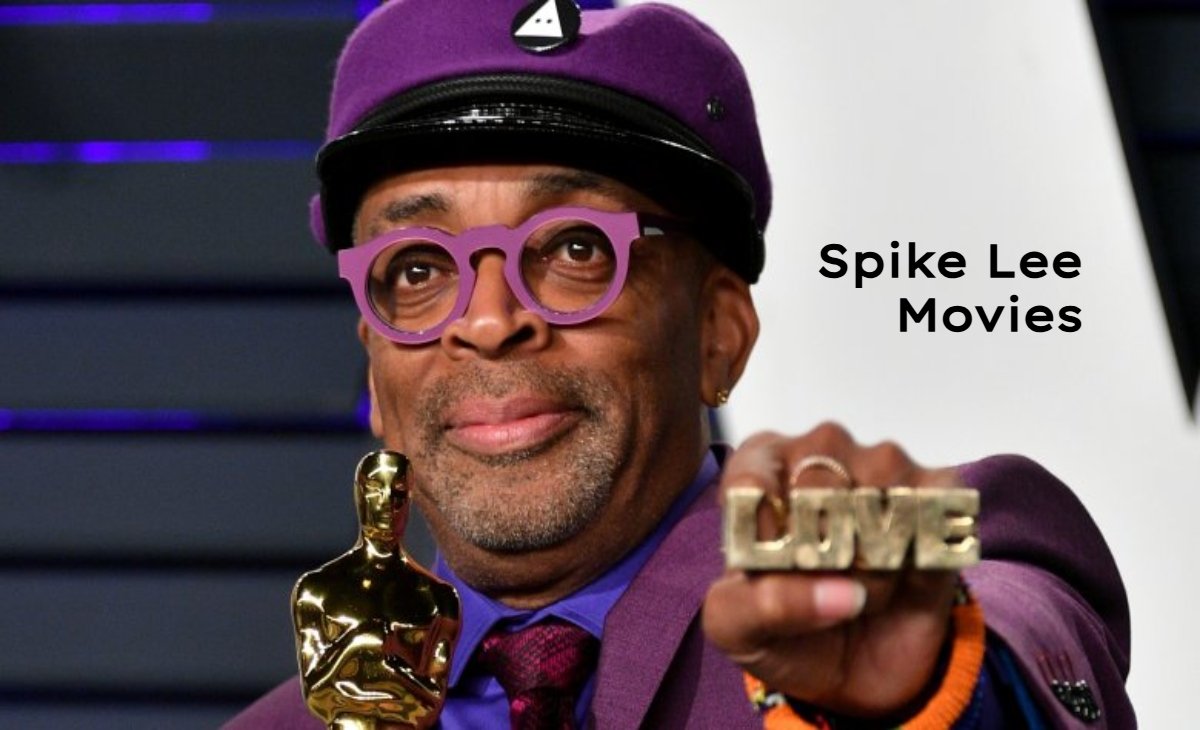Spike Lee is a name that reverberates through the halls of cinema. Spike Lee Movies are not just stories; they are cultural conversations, challenging societal norms and pushing boundaries. With a unique blend of style, humor, and social commentary, Spike Lee has carved out a distinct niche in the film industry.
From his early days as an indie filmmaker to becoming one of Hollywood’s most influential voices, Lee’s work resonates with audiences on multiple levels. His films tackle themes like race relations, identity, and justice—issues that remain relevant today. Whether you’re revisiting classics or discovering hidden gems for the first time, Spike Lee movies offer more than just entertainment; they provoke thought and inspire change.
Join us as we explore the bold narratives crafted by this cinematic visionary. Each film tells a story worth telling and reveals why Spike Lee’s legacy continues to shape cinema as we know it today.
Why Spike Lee Movies Still Resonate Today
Spike Lee movies strike a chord with audiences because they tackle timeless issues. His exploration of race, identity, and social justice remains relevant as society grapples with these complex themes.
The authenticity in his storytelling creates a connection. Viewers see their own struggles reflected on screen, making the narrative feel personal and urgent.
Lee’s ability to blend humor with serious subject matter ensures that his movies are not only thought-provoking but also engaging. This balance allows viewers to digest challenging topics without feeling overwhelmed.
Moreover, his innovative storytelling techniques—like breaking the fourth wall or using vibrant visuals—keep audiences captivated. They challenge conventional cinematic norms while inviting reflection.
In an ever-evolving cultural landscape, Spike Lee’s work continues to inspire dialogue about important societal issues, ensuring that his films resonate across generations. Each release prompts both introspection and conversation, solidifying his place in modern cinema history.
The Beginning: Spike Lee’s Rise in the Indie Scene
Spike Lee burst onto the scene in the late 1980s, changing the landscape of independent cinema. Armed with a camera and a vision, he sought to tell stories often overlooked by mainstream filmmakers.
His debut feature, “She’s Gotta Have It,” was shot on a shoestring budget but resonated deeply with audiences. The film’s candid portrayal of love and sexuality among Black characters offered something fresh at the time.
Lee’s unique storytelling style combined humor and social commentary, captivating viewers while provoking thought. He became a voice for his generation—a storyteller unafraid to tackle issues like race relations and identity.
As an auteur in an era dominated by Hollywood blockbusters, Lee carved out a niche that would inspire countless indie filmmakers who followed in his footsteps. His success opened doors for diverse voices in cinema, forever altering its trajectory.
She’s Gotta Have It: A Game-Changer in Black Cinema
“She’s Gotta Have It” burst onto the scene in 1986, shaking up conventions and redefining narratives in Black cinema. Spike Lee’s bold directorial debut challenged societal norms with its unapologetic portrayal of a young woman exploring her sexuality and independence.
Nola Darling, played by Tracy Camilla Johns, is not your typical heroine. She navigates multiple relationships while asserting her right to choose without shame or judgment. This fresh perspective was a breath of air during an era dominated by stereotypical roles for Black characters.
The film’s innovative storytelling techniques—including breaking the fourth wall—added layers to Nola’s experience, inviting audiences into her world. Its vibrant visual style showcased Brooklyn as both a character and backdrop, highlighting urban life with authenticity.
With a modest budget but immense cultural impact, “She’s Gotta Have It” paved the way for future filmmakers to explore complex themes within Black stories.
Jungle Fever: Interracial Love & Cultural Conflict
“Jungle Fever,” released in 1991, remains a poignant exploration of interracial relationships. The film tells the story of Flipper and Angie, navigating their love against the backdrop of societal expectations.
Spike Lee masterfully captures cultural tensions that simmer beneath the surface. The characters’ experiences reflect broader issues such as racism and identity. Their romance ignites conversations about taboos often left unspoken.
The film’s vibrant cinematography contrasts beautifully with its heavy themes. Lee uses every frame to challenge viewers’ perceptions while offering an unfiltered glimpse into both communities involved.
Through sharp dialogue and nuanced performances, “Jungle Fever” humanizes its characters rather than reducing them to stereotypes. This depth allows audiences to engage empathetically with their struggles.
It’s not just a love story; it’s a compelling commentary on what happens when two worlds collide amidst prejudice and misunderstanding.
Malcolm X: A Monumental Biopic That Rewrote the Genre
Spike Lee’s “Malcolm X” stands as a towering achievement in the biopic genre. Released in 1992, it redefined how stories of iconic figures could be told on screen.
Denzel Washington delivers a powerful performance, embodying Malcolm’s complexity and charisma. His transformation is not just physical; it’s deeply emotional and intellectual.
The film navigates through pivotal moments of Malcolm’s life with grace, exploring themes of identity, race, and redemption. It doesn’t shy away from the uncomfortable truths surrounding his journey.
Cinematography plays a crucial role here. Lee uses vibrant colors and dynamic shots to enhance the narrative impact. The storytelling blends historical footage seamlessly with dramatized scenes, creating an immersive experience.
Music also enriches this masterpiece—Terrence Blanchard’s score complements every moment beautifully. The film invites audiences to reflect on their own beliefs about justice and equality while honoring Malcolm’s legacy authentically.
Recurring Themes in Spike Lee’s Filmography
Spike Lee’s films are a tapestry of recurring themes that reflect societal struggles and triumphs. Racism, identity, and social justice echo throughout his work. Each narrative serves as a mirror to the complexities of American life.
He often explores the African American experience, highlighting both pain and resilience. This duality creates rich characters who navigate oppressive systems while seeking empowerment.
Another theme is gentrification, which appears in works like “Do The Right Thing.” Lee portrays urban landscapes changing under economic pressures, raising questions about community and belonging.
Lee also delves into cultural pride through vibrant storytelling. His characters celebrate their heritage while grappling with external perceptions.
Interpersonal relationships frequently take center stage too—love, betrayal, friendship—all presented with raw honesty. These connections serve as microcosms for larger societal issues within his narratives.
Spike Lee’s Iconic Partnership with Denzel Washington
Spike Lee and Denzel Washington share a dynamic partnership that has redefined cinematic storytelling. Their collaboration began with “Mo’ Better Blues,” where Washington delivered a mesmerizing performance as a troubled jazz musician. This film marked the start of something special.
The duo’s chemistry shines especially in “Malcolm X.” Washington brought depth to the iconic figure, showcasing his struggles and triumphs. Lee’s direction amplified those themes, creating an unforgettable experience.
In “Inside Man,” their reunion proved equally impactful. The heist thriller allowed Washington to display both charisma and vulnerability, proving his range as an actor while delivering social commentary through clever dialogue.
Together, they challenge audiences with thought-provoking narratives intertwined with powerful performances. Each film underlines their commitment to exploring complex characters within culturally rich stories, cementing their legacy in cinema history.
The Spike Lee Signature Shot Explained
Spike Lee has a distinct visual style that sets his films apart. One of his most recognizable techniques is the “Spike Lee signature shot.”
This dynamic framing often features characters looking directly into the camera, breaking the fourth wall. It creates an intimate connection between the audience and the characters’ emotions.
The shot can be strikingly powerful, transforming a simple moment into something profound. It allows viewers to engage deeply with themes of race, identity, and social issues prevalent in his narratives.
Lee frequently uses this technique during pivotal scenes. It heightens tension or emphasizes a character’s emotional turmoil. The result is an unforgettable cinematic experience that leaves lasting impressions.
By employing this unique approach, Spike Lee invites audiences to reflect on their own perspectives while challenging societal norms. Each frame becomes not just storytelling but also an invitation for dialogue and introspection.
Inside Man: Spike Lee’s Commercial Triumph
“Inside Man” marked a pivotal moment in Spike Lee’s career. Released in 2006, this heist thriller showcased his ability to blend commercial success with thought-provoking themes.
The film follows a meticulously planned bank robbery that spirals into a tense standoff between the robbers and law enforcement. Denzel Washington stars as Detective Keith Frazier, bringing charisma and depth to the role. The dynamic performances elevate the narrative beyond typical genre tropes.
Lee masterfully weaves social commentary into the story, exploring issues like race, class, and morality. The intricate plot keeps viewers on edge while inviting them to ponder deeper questions about justice.
With its sharp dialogue and stylish direction, “Inside Man” became one of Lee’s highest-grossing films. It remains a standout example of how mainstream cinema can engage audiences without sacrificing substance or artistry.
Spike Lee’s Influence on Modern Directors
Spike Lee’s influence on modern directors is profound and far-reaching. His unique storytelling techniques have inspired a new generation of filmmakers to embrace bold narratives.
Directors like Ava DuVernay and Jordan Peele credit Lee for paving the way in exploring complex racial themes through cinema. They draw from his fearless approach, which often challenges societal norms.
Lee’s use of vibrant visuals and potent symbolism encourages contemporary creators to think outside traditional filmmaking boundaries. Many now strive for authenticity in representation, reflecting diverse voices that resonate with today’s audiences.
Moreover, his ability to mix genres seamlessly has emboldened others to experiment creatively. The blend of drama, humor, and social commentary creates a rich tapestry that many aspire to replicate.
With every film he releases, Spike Lee continues to shape the landscape of American cinema while inspiring directors across various genres worldwide.
Underrated Spike Lee Movies Worth Watching
While Spike Lee is often celebrated for his iconic films, several underrated gems deserve more attention. “25th Hour” offers a gripping exploration of choices and consequences in post-9/11 America. Edward Norton’s performance anchors this poignant narrative.
“Girl 6” dives into the life of a struggling actress navigating the world of phone sex work. It’s an unconventional take that challenges societal norms, showcasing Lee’s versatility as a filmmaker.
“Red Hook Summer,” set against a backdrop of Brooklyn, captures youthful innocence amid complex social issues. The film’s subtle storytelling resonates with authenticity.
Lastly, “Da 5 Bloods” confronts the intersection of war and race while honoring Black soldiers’ sacrifices during the Vietnam War. Its powerful themes are both timely and timeless.
These films reflect Lee’s artistic range and thought-provoking narratives, ensuring they remain relevant beyond their initial releases.
How His Films Reshaped American Independent Cinema
Spike Lee Movies have left an indelible mark on American independent cinema. He broke barriers at a time when mainstream Hollywood overlooked stories from marginalized communities. His bold storytelling and distinct visual style opened doors for future filmmakers.
By challenging stereotypes, he encouraged diverse voices to emerge. Lee’s work inspired many indie directors who now explore complex narratives that reflect society’s multifaceted issues.
His ability to blend social commentary with commercial appeal set a new standard. The success of his early projects demonstrated that audiences crave authenticity and representation.
Moreover, Spike Lee’s passionate advocacy for underrepresented filmmakers created a ripple effect in the industry. This paved the way for more inclusive production practices and funding opportunities within the independent film landscape.
Today, his influence continues through festivals highlighting diverse talent and stories that resonate across cultures.
Bamboozled: A Satirical Masterpiece Ahead of Its Time
“Bamboozled” stands out as one of Spike Lee’s boldest works. Released in 2000, this satirical film dives deep into the complexities of race and representation in American media.
At its core, it critiques how African Americans have been portrayed historically in entertainment. The film’s sharp dialogue and outrageous scenarios force viewers to confront uncomfortable truths about stereotypes.
Lee employs a unique narrative style that blends humor with biting commentary. This approach not only entertains but also sparks critical discussions about cultural appropriation and identity.
With memorable performances from actors like Damon Wayans, “Bamboozled” challenges audiences to reflect on their own perceptions of race.
Its daring take on modern-day minstrel shows feels oddly prescient today, making it resonate strongly amid ongoing conversations about racial dynamics in Hollywood and beyond.
Awards, Nominations, and Milestones
Spike Lee’s career is adorned with numerous accolades that underscore his impact on cinema. He has received multiple Academy Award nominations, showcasing his talent and vision.
His film “Do the Right Thing” earned him an Oscar nod for Best Original Screenplay. This was a pivotal moment, as it marked one of the first times a Black filmmaker received such recognition.
Beyond the Oscars, Spike has garnered awards from various prestigious organizations. The Cannes Film Festival honored him with the Grand Prix for “Do the Right Thing.”
Milestones in his career include being awarded an honorary Oscar in 2016 for his contributions to filmmaking. Each award not only celebrates individual films but also highlights Lee’s broader influence on American culture and society.
With every project he undertakes, Spike continues to push boundaries and inspire future generations of filmmakers.
Spike Lee’s Place in Pop Culture and Politics
Spike Lee occupies a unique space in both pop culture and politics. His films often serve as mirrors reflecting societal issues, provoking thought and dialogue.
Through his provocative storytelling, he addresses racial tensions, inequality, and social justice. Films like “Do the Right Thing” challenge audiences to confront uncomfortable truths about race relations.
Beyond cinema, Spike is an outspoken advocate for change. He uses his platform to highlight pressing political issues, encouraging activism among viewers.
His iconic style has permeated music videos and commercials too, blending art with activism seamlessly.
Lee’s influence extends into collaborations with artists across various mediums. He inspires a new generation of creators who embrace bold narratives focused on marginalized voices.
In every project he undertakes, there’s a sense of urgency that resonates deeply within contemporary discussions—making him not just a filmmaker but also an essential cultural commentator.
Spike Lee Movies: A Legacy That Continues to Inspire
Spike Lee Movies are far more than just entertainment; they are powerful cultural commentaries that resonate deeply with audiences. His ability to capture the complexities of race, identity, and societal issues makes his work timeless.
From “Do the Right Thing” to “BlacKkKlansman,” each film serves as a mirror reflecting America’s ongoing struggles. They invite viewers to confront uncomfortable truths while provoking crucial conversations about equality and justice.
Young filmmakers today draw inspiration from Lee’s bold storytelling techniques and innovative cinematic style. His commitment to authenticity encourages a new generation to tell their own stories without fear.
Moreover, Spike Lee’s collaborations with artists across different mediums amplify his influence beyond cinema. Musicians, writers, and visual artists cite him as a significant source of motivation in pursuing creative expression that challenges norms.
His legacy is not only etched in film history but also continues to inspire activism through art in ways that remain relevant for years to come.







